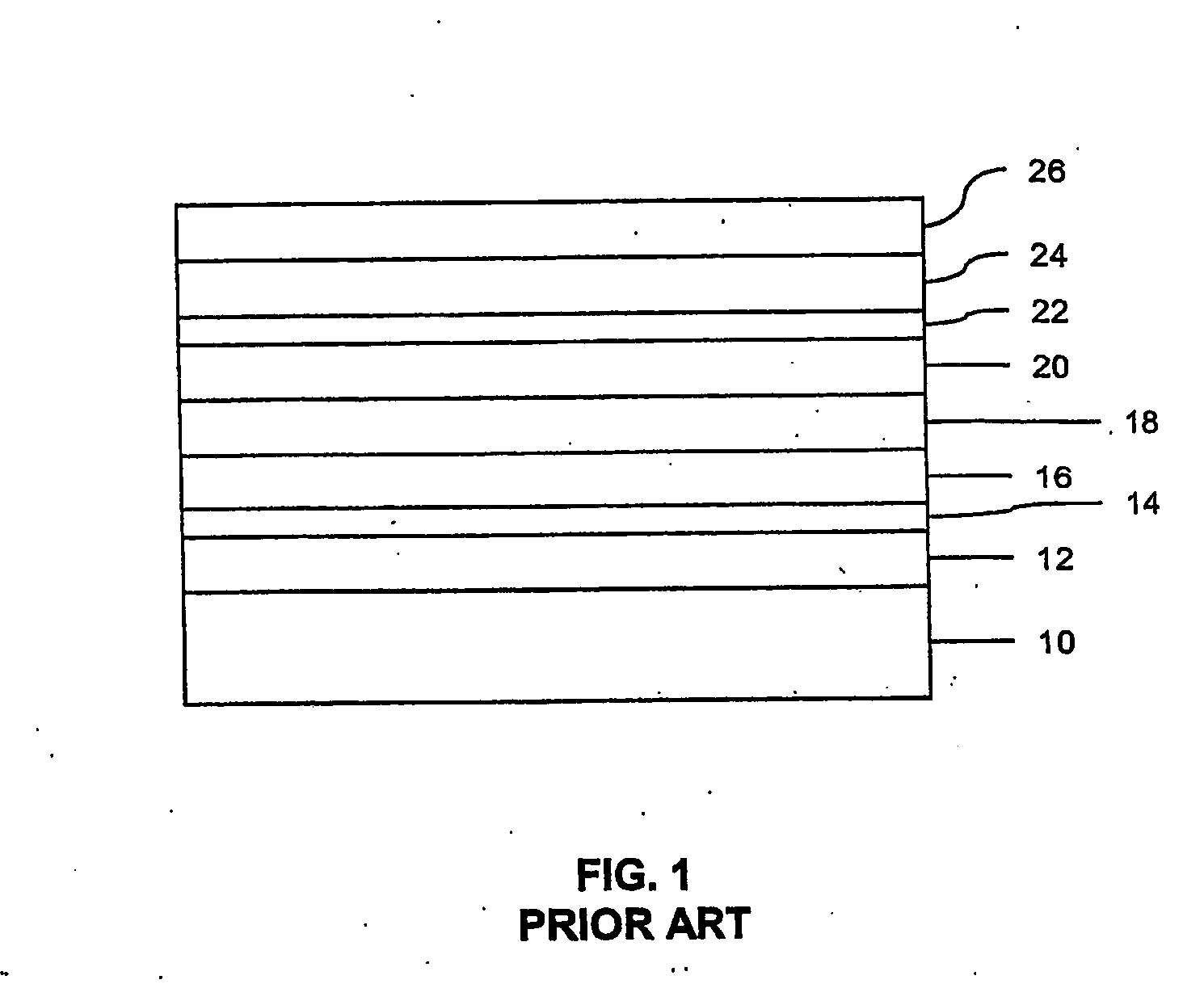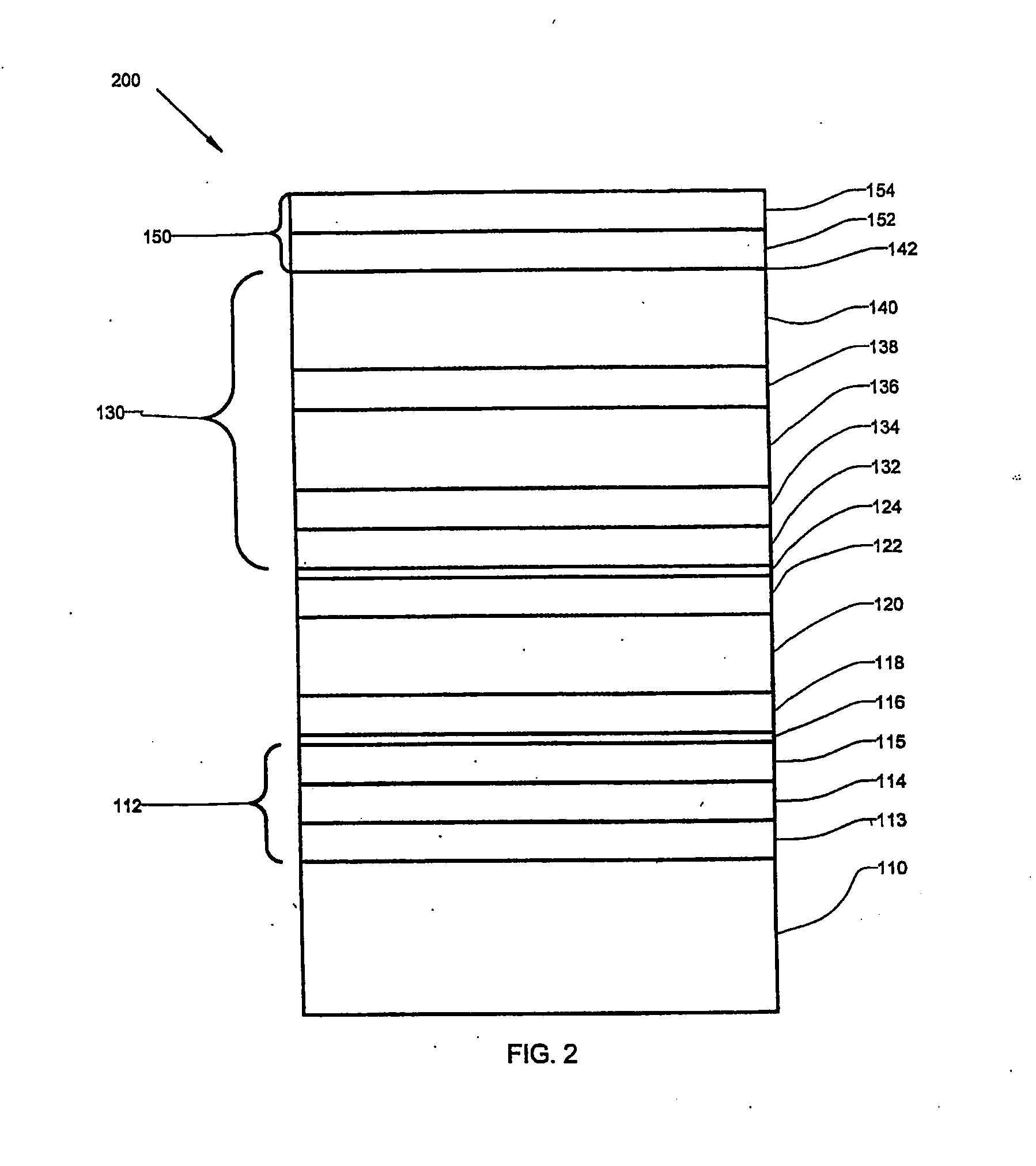Multi-layer structure for use in the fabrication of integrated circuit devices and methods for fabrication of same
- Summary
- Abstract
- Description
- Claims
- Application Information
AI Technical Summary
Benefits of technology
Problems solved by technology
Method used
Image
Examples
Embodiment Construction
[0022] Referring to FIG. 2 a multi-layer structure according to an embodiment of the invention will now be described. Structure 200 is a multi-layer structure adapted for formation of three different types of devices, and in particular three different types of HEMTs, and in particular three different types of pHEMTs, which types are characterized by at least two different pinch-off voltages.
[0023] The multi-layer structure 200 has a substrate 110. Substrate 110 may be of a semi-insulating material, such as GaAs. Buffer layer 112 is formed on substrate 110. Buffer layer 112 may include a superlattice layer 113, an undoped AlAs layer 114 on superlattice layer 113, and an undoped AlGaAs layer 115 on undoped AlAs layer 114. A superlattice is a semiconductor structure having at least four, and typically many more, extremely thin layers of semiconductor material, generally not more than about 100 angstroms each, and in some implementations not more than about 40 angstroms each; adjacent ...
PUM
 Login to View More
Login to View More Abstract
Description
Claims
Application Information
 Login to View More
Login to View More - R&D
- Intellectual Property
- Life Sciences
- Materials
- Tech Scout
- Unparalleled Data Quality
- Higher Quality Content
- 60% Fewer Hallucinations
Browse by: Latest US Patents, China's latest patents, Technical Efficacy Thesaurus, Application Domain, Technology Topic, Popular Technical Reports.
© 2025 PatSnap. All rights reserved.Legal|Privacy policy|Modern Slavery Act Transparency Statement|Sitemap|About US| Contact US: help@patsnap.com



